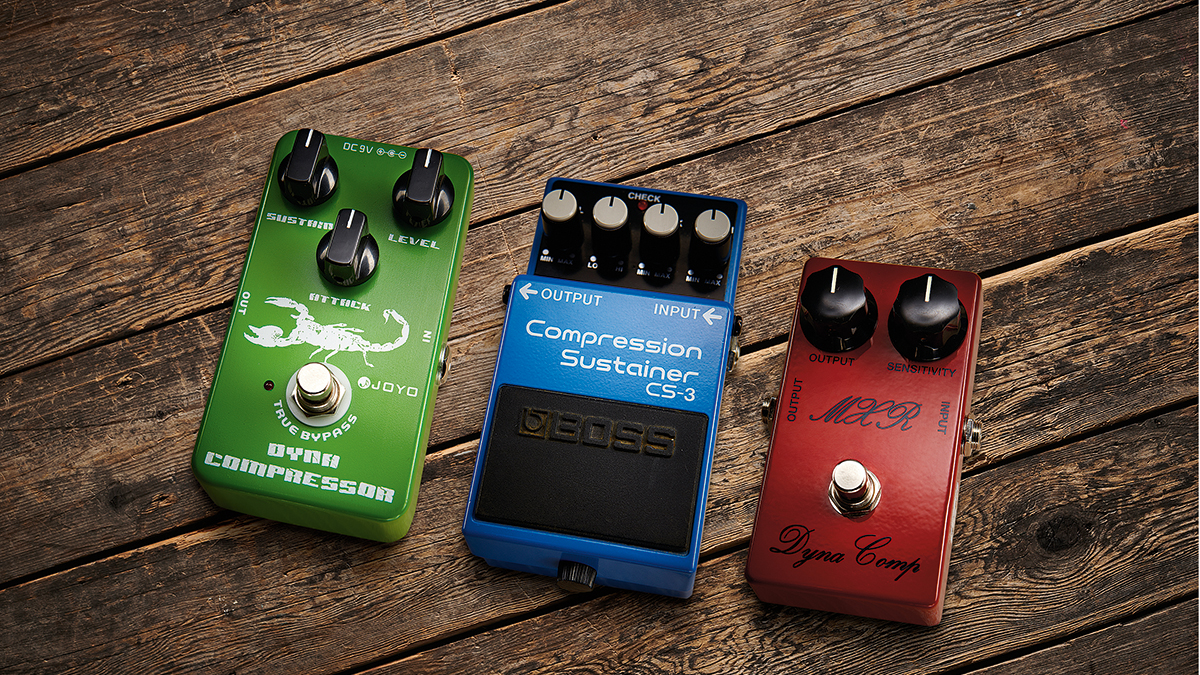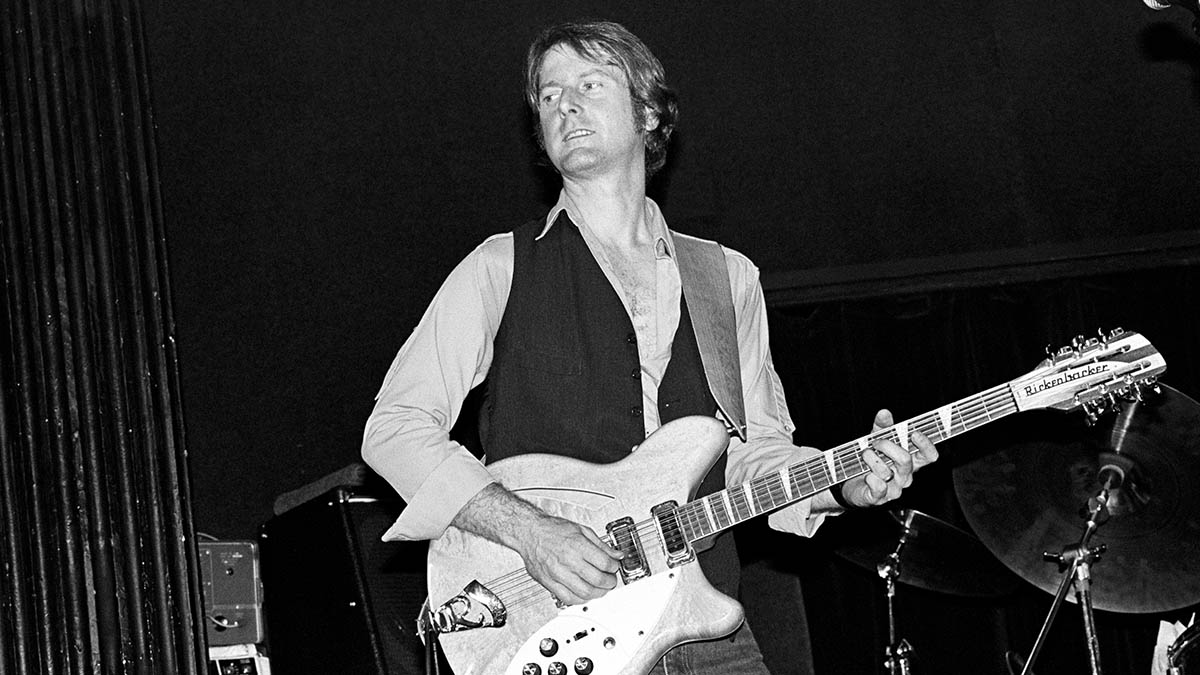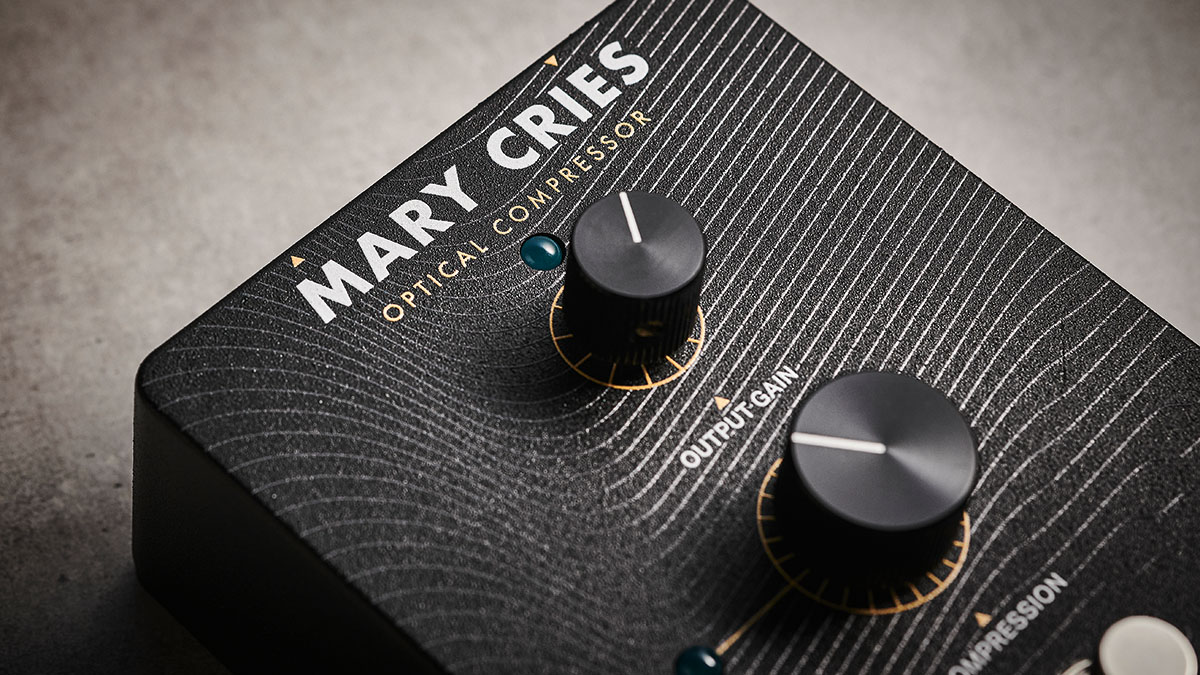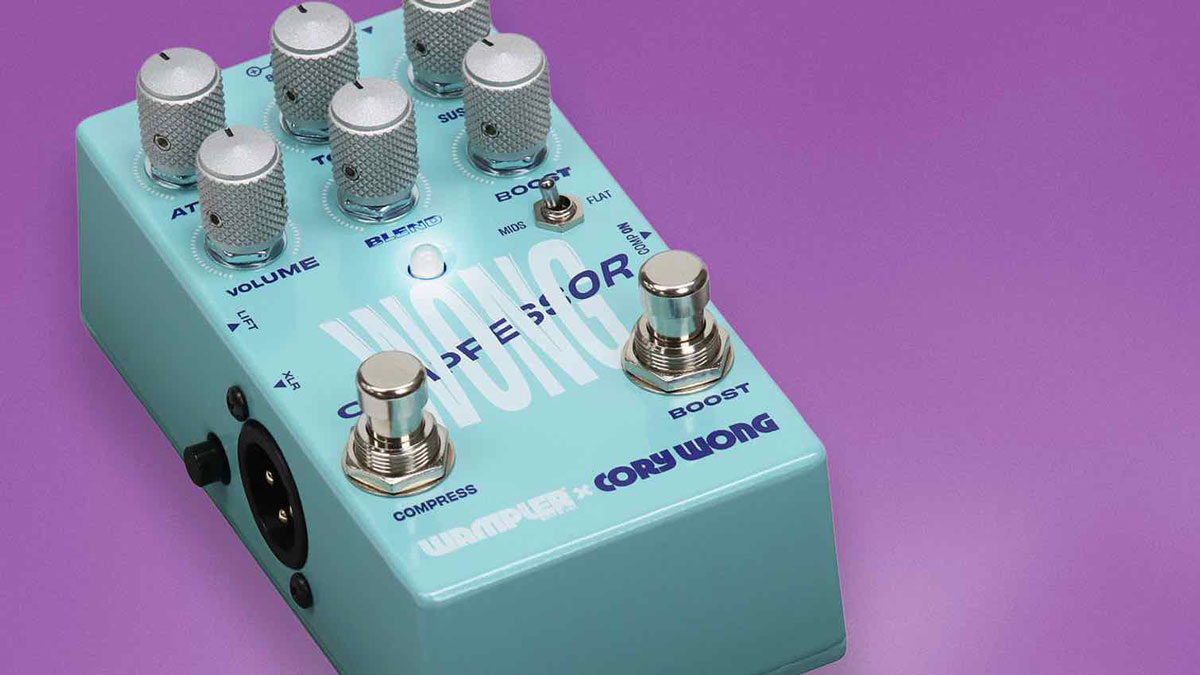Everything you need to know about guitar compression: its history, how it works and how it can make your guitar sound better than ever before

In very simple terms, compressors are like automatic volume controls that kick in when the input signal exceeds a preset level. Then, once the input level has fallen back below that threshold level, the compressor resets itself and ceases to have any effect on the sound.
Depending on the sophistication or design of the compressor itself, users may be able to set the level at which the compressor is activated, the speed of response, the speed at which it resets, and the overall output level of the compressor itself.
We’ll explore those controls in more detail later, but first let’s discuss the origins of electronic compression.
Narrow view
For our purposes, dynamic range can be defined as the difference between the quietest and loudest parts of a musical performance. This caused technical challenges during the analogue audio era, when recordings were made direct to disk or onto magnetic tape.
Both formats have a noise floor that can be audible when music is at its quietest, and, in extreme cases, disc surface noise and tape hiss can obscure the music. At the top end of the dynamic range, the input signal can exceed the capabilities of the recording media and induce unpleasant distortion.

Dynamic range is a key component of musical expression, but even so, audio engineers soon realised that a method of narrowing dynamic range was needed in order to make viable recordings.
Audio compressors were originally designed to overcome technical issues, rather than enhance the sound or create musical effects. Having a compressor on hand to control the loudest passages allowed recording engineers to print quieter passages at a higher level than was previously possible. This improved the signal-to-noise ratio, which effectively masked tape hiss in addition to reducing the risk of distortion.
Get The Pick Newsletter
All the latest guitar news, interviews, lessons, reviews, deals and more, direct to your inbox!
You could argue that the theoretical ideal would be complete audio transparency, with the compressor imperceptibly controlling the dynamics while imparting no sonic character. But in reality, many compressors have strong sonic characteristics – and that’s what we love about them.

Compression effect
Back in the 1960s, audio engineering staff at studios such as Abbey Road were notoriously protective of their Fairchild and Altec compressors, and studio management made clients book them in advance. These classically trained recordists were no doubt concerned that scruffy, long-haired types might abuse the equipment by pushing it beyond its design parameters.
It was a logical move to apply more compression during mixing and or mastering to make finished records sound as good at home as they did on the radio
Musical tastes were changing faster than their attitudes and musicians soon noticed their recordings sounded better on the radio than they did in the control room or on their record players. Broadcasters always applied compression to prevent transmitter overload, so it was a logical move to apply more compression during mixing and or mastering to make finished records sound as good at home as they did on the radio.
Mix bus compression made recordings louder, clearer and punchier. The loudness effect is curious, given that compressors are designed to restrict volume peaks, but it works because our perception of loudness is based on average volume level, instead of transitory volume peaks.
Imagine that the dynamic range of a piece of music can be plotted on a scale of 1 to 10, with 1 being the quietest and 10 the loudest.
Let’s say that peaky signals, such as bass and snare drums, hit 10 but most of the audio action is centred between 4 and 6. If a compressor reduces the peaks by a factor of three, it means that the overall level can be increased by the same amount without overloading the output. With the audio now averaging between 7 and 9, it stands to reason that the track will be perceived as louder.
This can have the knock-on effect of making quieter elements of the mix easier to hear. These may include reverb and delay effects, room ambience, backing vocals, subtle performance details or textural guitar parts, which may conjure a sense of enhanced clarity.
As multitrack recording became commonplace, engineers started applying compression to individual instruments when recording and mixing. Certain compressors became industry standards for vocals, bass, drums and guitars. Vintage examples can be hugely expensive, but plug-in software emulations can sound superb and they’re more accessible.
Stompbox compression

A compressor pedal can do a wonderful job of making your playing technique seem more refined than it really is. They can make picked arpeggios sound smoother and they bring out the cluck and quack with country picking. In fact, a compressor pedal is pretty much indispensable for country players or anybody trying to capture that early Mark Knopfler tone.
It’s also essential for funky rhythm, when everything depends on keeping the guitar even and up front in the mix. And the same applies if you need an acoustic guitar to drive a track. Roger McGuinn’s iconic 12-string guitar tone was so dependent on compression that he actually had a compressor built into his Rickenbacker signature model.
Compression can also be used to achieve the type of sustain that would normally require high-gain amp settings or a fuzzbox. David Gilmour’s Another Brick In The Wall solo is a stellar example because his tone is very clean, but the notes seem like they could sustain indefinitely.
This type of extreme compression completely eliminates a note’s leading transient peak and then slowly releases its grip. So the compressor brings the volume and counteracts the note’s natural decay. Although this creates a sort of infinite sustain effect, the compressor’s output level must be cranked up to make up for the overall volume drop. The risk is that noise can become intrusive with these settings.
Newbies often ask where to put a compressor on the pedalboard. It’s usual to place it at the beginning of the signal chain, otherwise they can negate the volume lift provided by fuzz, overdrive and boost pedals.
However, applying compression post-boost or overdrive can provide really long sustain without the need for heavy overdrive or distortion. So long as the compression effect is light, it won’t clamp down too hard when you do want more volume.
Sometimes the ‘best’ setting is when you’re not certain the compressor is even on
Compressors with output level controls can be used for clean boost, and when set for enhanced sustain they’re useful for clean soloing. Some players like to keep a compressor switched on all the time to achieve a more detailed and ‘produced’ tone, and switching in a second compressor for soloing makes the clean sustain trick even more effective.
Compressors interact with your playing touch and the tonal characteristics of your guitar and amp. That’s why it’s so hard to provide definitive guidance on how the controls should be set.
Excessive compression may make you feel like you’re battling the pedal for control. Sometimes the ‘best’ setting is when you’re not certain the compressor is even on. So be sure to experiment and get a feel for what the controls do and how they interact.
Huw started out in recording studios, working as a sound engineer and producer for David Bowie, Primal Scream, Ian Dury, Fad Gadget, My Bloody Valentine, Cardinal Black and many others. His book, Recording Guitar & Bass, was published in 2002 and a freelance career in journalism soon followed. He has written reviews, interviews, workshop and technical articles for Guitarist, Guitar Magazine, Guitar Player, Acoustic Magazine, Guitar Buyer and Music Tech. He has also contributed to several books, including The Tube Amp Book by Aspen Pittman. Huw builds and maintains guitars and amplifiers for clients, and specializes in vintage restoration. He provides consultancy services for equipment manufacturers and can, occasionally, be lured back into the studio.
“The original Jordan Boss Tone was probably used by four out of five garage bands in the late ’60s”: Unpacking the gnarly magic of the Jordan Boss Tone – an actual guitar plug-in that delivers Dan Auerbach-approved fuzz
“This is a powerhouse of a stompbox that manages to keep things simple while offering endless inspiration”: Strymon EC-1 Single Head dTape Echo pedal review


![A black-and-white action shot of Sergeant Thunderhoof perform live: [from left] Mark Sayer, Dan Flitcroft, Jim Camp and Josh Gallop](https://cdn.mos.cms.futurecdn.net/am3UhJbsxAE239XRRZ8zC8.jpg)








